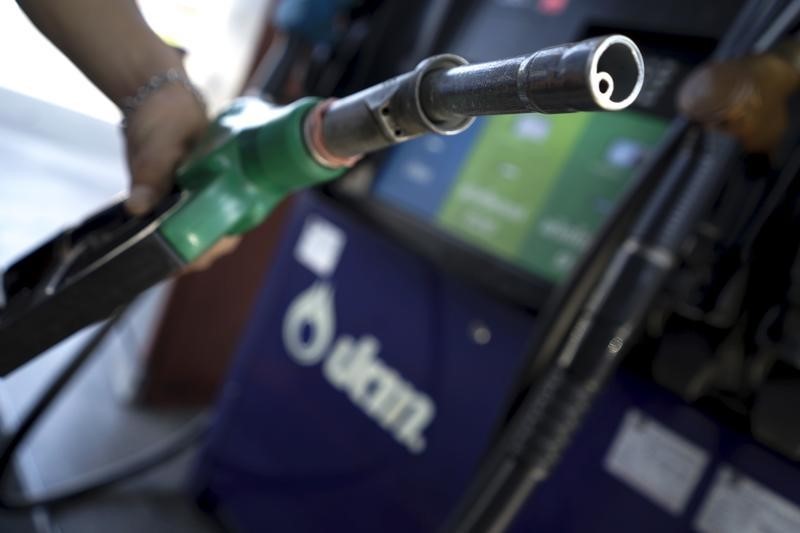By Barani Krishnan
Investing.com - U.S. oil production is down by an estimated 20% from the record highs of this year. But it’s all-time highs in crude stockpiles and fears of a second wave of coronavirus infections that seem to be slowly making their impact on the market.
Oil prices fell more than half a percent on Wednesday after the U.S. Energy Information Administration said U.S. crude inventories in the country rose by 1.2 million barrels last week to a hitherto unseen level of 539.3 million barrels.
Analysts tracked by Investing.com had forecast a draw of 152,000 barrels compared to a build of 5.7 million barrels the previous week.
At 539.3 million barrels, crude stockpiles were about 15% above the five-year average for this time of year, and independent of the crude held under the Strategic Petroleum Reserve, which represents the country’s emergency oil supplies. The SPR’s holdings rose by 1.7 million barrels last week, and now stand at 651.7 million barrels.
On the coronavirus front, the number of new Covid-19 cases in Beijing hit 106 on Tuesday, with 29 communities in the sprawling Chinese capital back on lockdown. While the number of cases are small, it is still a worrying resurgence for a city that enjoyed almost two months without a single new infection.
In the United States, nine states — Alabama, Arizona, Florida, Nevada, North Carolina, Oklahoma, Oregon, South Carolina, and Texas — reported either new single-day highs or set a record for seven-day new coronavirus case averages.
At least 115,000 people in the United States have died of the coronavirus, and more than 2 million cases have been reported since January. U.S. Vice President Mike Pence, however, said in a Wall Street Journal op-ed that fears of a second wave of infections were “overblown," dipping into his boss Donald Trump’s playbook that “the media has tried to scare the American people”.
New York-traded West Texas Intermediate, the benchmark for U.S. crude, was down 26 cents, or 0.7%, at $38.12 per barrel by 1:30 PM ET.
London-traded Brent, the global benchmark for oil, slid by 23 cents, or 0.6%, to $40.72.
The marginal drop in crude prices told analysts that not all on the market were taking seriously enough the potential for both economic and fuel demand recovery to slow from a second Covid-19 wave.
“We think the oil market is not currently pricing in a significant probability of either second waves of coronavirus cases in key consumers and the associated lockdowns, or anything less than a rapid return to economic business-as-usual,” Standard Chartered (OTC:SCBFF) analysts said, pointing to a downside risk for prices in the medium term.
Demand for crude collapsed earlier this year because of Covid-19 work shutdowns. OECD stockpiles, traditionally the key indicator for the Organization of Petroleum Exporting Countries, are some 141 million barrels above their five-year average, implying a significant supply overhang even if the OPEC+ producers extend their agreement to cut production 9.7 million barrels a day beyond the end of July.
Earlier Wednesday, OPEC’s latest monthly report indicated that there will be room for its members to ease their production constraints later in the year. It estimated global demand for its crude rising to 27.8 million barrels a day in the third quarter and to 31.2 million bpd by the final quarter of 2020.
OPEC members produced 24.20 mil bpd in May.
Away from the crude stockpiles story, U.S. oil production actually fell to an estimated 10.5 million barrels per day, down 20 percent from record highs hit three months ago, the EIA data showed. Just in mid-March, the world’s largest oil producer was turning out 13.1 million barrels daily.
Gasoline stockpiles, a bright spot on the oil complex since the U.S. Covid-19 lockdowns began easing in recent weeks, saw a sharper-than-expected draw of nearly 1.66 million barrels last week, adding to the previous week’s drop of 866,000. The market had only expected a 170,000-barrel decline for last week.
Distillate stockpiles, led by diesel, also surprised, dropping by 1.35 million barrels last week versus expectation for a 2.43-million barrel build. Distillate stockpiles had grown by nearly 53 million barrels in nine previous weeks.
